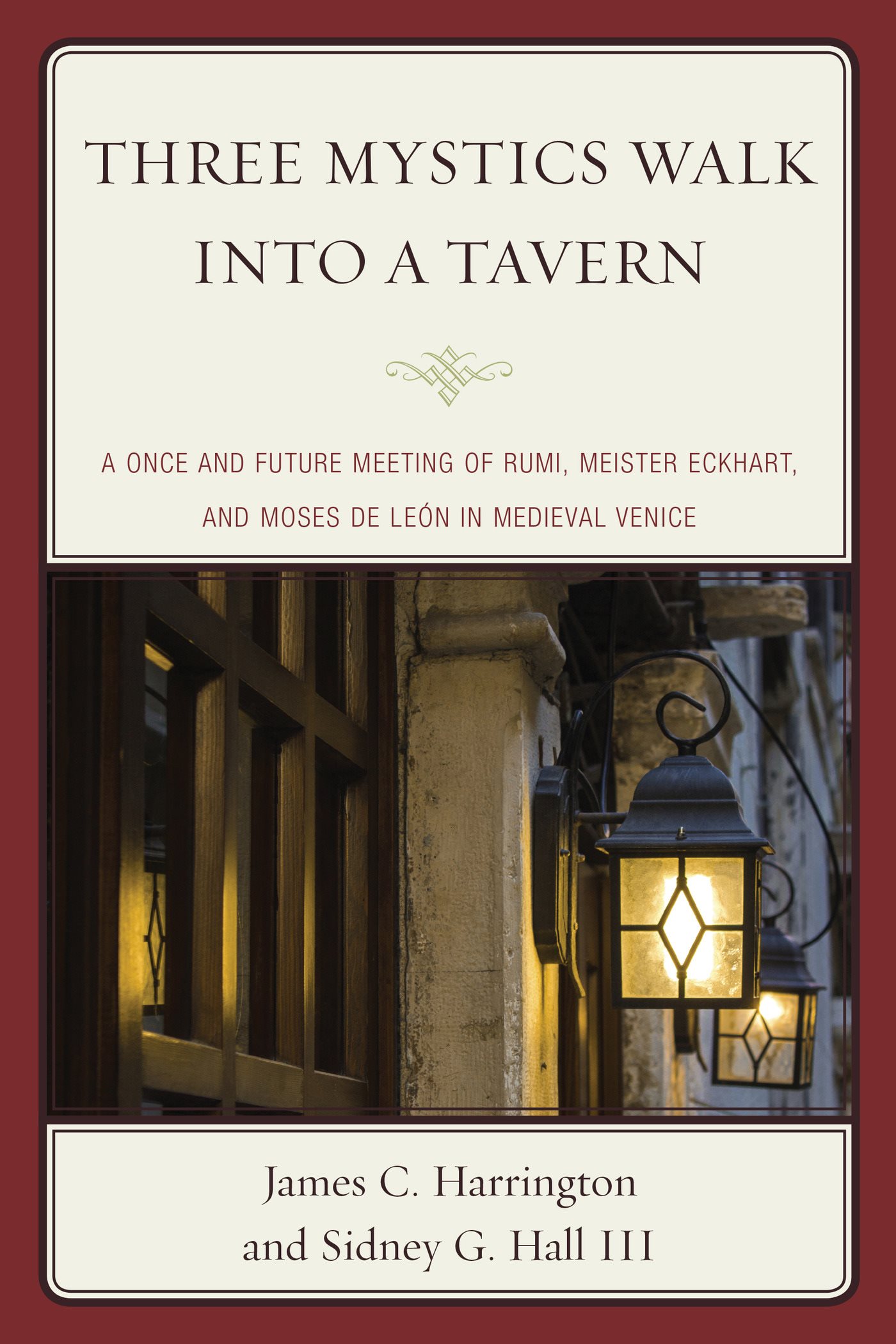Three Mystics Walk into a Tavern
A Once and Future Meeting of Rumi, Meister Eckhart, and Moses de Len
in Medieval Venice
James C. Harrington and Sidney G. Hall III
Hamilton Books
An Imprint of
Rowman & Littlefield
Lanham Boulder New York Toronto Plymouth, UK
Copyright 2015 by Hamilton Books
4501 Forbes Boulevard, Suite 200, Lanham, Maryland 20706
Hamilton Books Aquisitions Department (301) 459-3366
Unit A, Whitacre Mews, 26-34 Stannary Street,
London SE11 4AB, United Kingdom
All rights reserved
Printed in the United States of America
British Library Cataloguing in Publication Information Available
Library of Congress Control Number: 2014959059
ISBN: 978-0-7618-6542-1 (pbk : alk. paper)ISBN: 978-0-7618-6543-8 (electronic)
 TM The paper used in this publication meets the minimum requirements of American National Standard for Information Sciences Permanence of Paper for Printed Library Materials, ANSI/NISO Z39.48-1992.
TM The paper used in this publication meets the minimum requirements of American National Standard for Information Sciences Permanence of Paper for Printed Library Materials, ANSI/NISO Z39.48-1992.
We respectfully thank all those people in our lives, family and friends, and those who went before us, some of whom appear in this book,
for their efforts and commitment to lighting the Divine Spark within us, and generations to come, so that it manifest itself in us as life,
justice, and equality. To them, we dedicate this book.
We also express our thanks to Rolando Prez
for his superb editing assistance and helpful insights,
which we incorporated into this book.
Foreword
Ori Z. Soltes
In the very beginning of the 12th century, the renowned Muslim jurist al-Ghazali (10581111) found himself frustrated. As a professor of jurisprudence at the University of Baghdad since the age of 35, he was at somewhat of a spiritual and intellectual dead-end. He had come to realize that he could never prove the validity of the Qurans verses to the satisfaction of a scepticto say nothing of a non-believerby means of the detailed rational arguments that he had been devising over the years. For he came to understand that, while the precepts of faith may be bolstered for the believer in reasonable arguments that are formally rational, such arguments ultimately all circle back to their own beginnings in the faith without which they fall apart.
Al-Ghazali thought, however, that there must beand soon came to realize that there wasanother path to spiritual satisfaction besides the path of sharia and its emphasis on logical, very intellectual argumentation. That path was (and is) the Muslim mystical path known as Sufism. Al-Ghazali the legal scholar left his university position and his friends and family and went off to join a group of Syrian Sufis. He devoted the last ten years of his life to exploring and explaining the precepts of a form of Islam that was experiential in its shape, in which anyone and everyone who genuinely desired to do sowhether of lower or upper socio-economic condition, whether schooled or unschooled in the exegetical ideas that flourished in the mosques and madrasascould find God, feel God: become, if even for only a moment, one with the One.
The mystical ideaof a deeper, more hidden depth to Divinity, which, by pure paradox, can and yet cannot (cannot and yet can) be accessedcan draw and has drawn any number of individuals along its path. No religious tradition is without its mystical side, for ultimately religion addresses a realm beyond our own; and all human groups express an interest in that realm. Within every tradition, the mystics seek more emphatically, more intensely for still greater depths within that Other than everyday religion seems to seek. This is the path that Al-Ghazali and many others have ultimately sought along to findpossibly, hopefullythe divine hiddenness that they know is there, even as one can never know in the conventional sense anything about divinity, much less about that hiddenness.
Al-Ghazali and the Sufis, who tutored his thinking in new, unshackled directions would have reveled in the intriguing text that follows this foreword. He would surely suggest that it will be of interest and of use to four kinds of people. Those who want a clear and concise yet sufficiently detailed introduction to the world of the 11th through 14th centuries in Europe and Asiaa sweeping sense of what was happening spiritually and culturally across those many miles and decadeswill find parts of this volume revelationary. Those who want a concise, clear and sufficiently detailed introduction to the lives and thought of three extraordinary mystics, one from each of the Abrahamic traditions, will find in parts of this volume essential starting points toward an ongoing dialogue with any or all of them. Their revolutionary contributions to the history of thought, and not only to the history of mystical aspiration, are stunning, and carefully discussed in this volume.
Those who appreciate the fantasy of three important historical figures who never met and may well never even have heard about each otherit is we who, from the lens of many centuries of distance are able to focus on their points of overlap and divergencebut who, had they met, might well have enjoyed an extraordinary conversation, will find the heart of this volume immensely pleasurable. That heart transforms intellectual discussions into intuitive, imagination-lush experiences of the minds of these figures. One might say that the first aspect of the volume is like Pshat, the second like Remez and the third like Drash, in the standard rabbinic approach to the exegesis of Gods word.
The fourthidealreader is like the fourth approach to Gods word: Sod. Such a reader, indeed, is like Rabbi Akiva entering the PaRDeS, in comparison with the three other rabbis who enter with him but dont go in peace and return in peace, as he does. That reader is the one who wants and appreciates all three of these elements and how they offer three different modes of exegesis of the human yearning for and striving toward God through Gods words and the ever-complicating reality of human words.
For this volume interweaves, in a fascinating and magisterial manner, the straightforward double intellectual thread of general history and culture with biographical information and an account of the spiritual contributions and legacies of Jalal ad-Din Rumi, Meister Eckhart and Moses de Len. As if that richness of presentation were not sufficient, the authors have engaged these three characters in a casual imagined conversation about not so casual subjectsbeginning, no less, with God. The authors tease out perspectives from their heroes in conversation that do two important things. They reveal in a more intimate, experiential way the kinds of thoughts that these three mystics either expressed in what they wrote or might have thought but never wroteperhaps never spokeat least in what has survived to our own time from their own writings and writings about them. We are thus confronted with a perfect paradox: the authors have given voice to the apophatic side of these three mystics who spent their adult lives wrestling with the Ineffable One.
So the conversation offers a perfectly logical shape that defies everyday logic (as mysticism itself must do and does): a shape that encompasses thinkers not only before the time of this trio but those who have come after. All three move thinkers comfortably from the Apostle Paul and Ibn al-Arabi to Dostoevsky and Jackson Browne. Those who come after include figures from

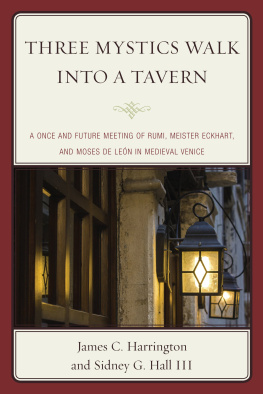
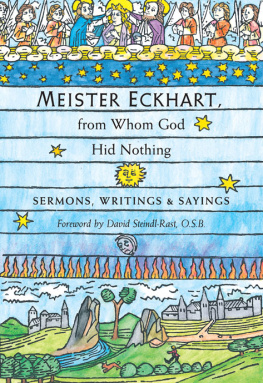
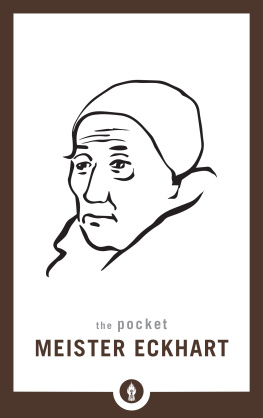
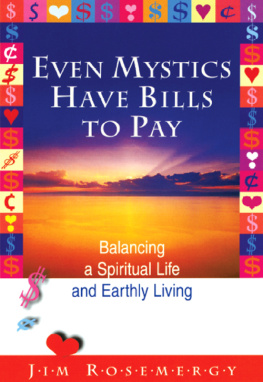


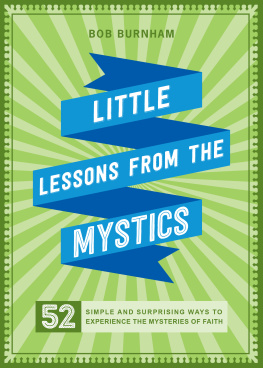
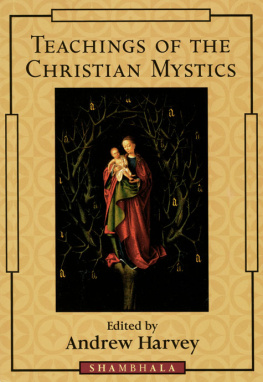
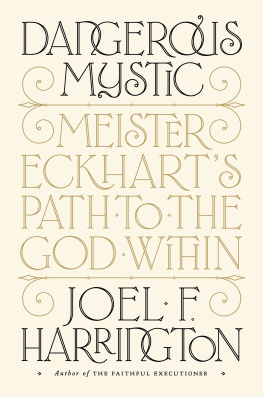
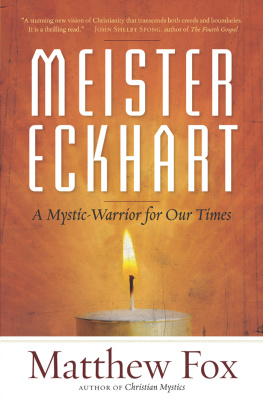
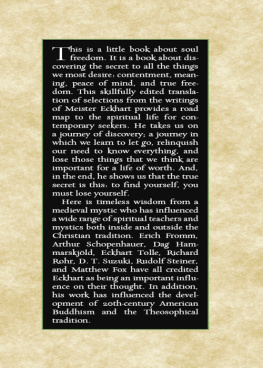

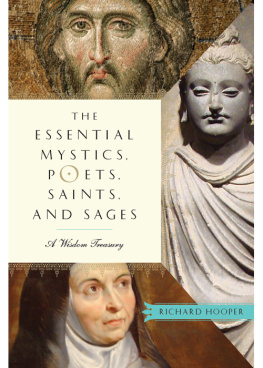
 TM The paper used in this publication meets the minimum requirements of American National Standard for Information Sciences Permanence of Paper for Printed Library Materials, ANSI/NISO Z39.48-1992.
TM The paper used in this publication meets the minimum requirements of American National Standard for Information Sciences Permanence of Paper for Printed Library Materials, ANSI/NISO Z39.48-1992.